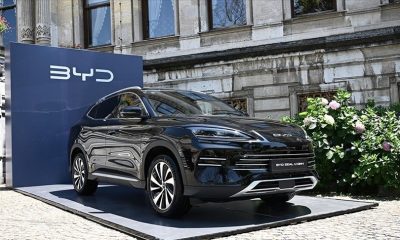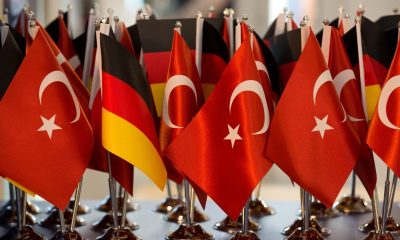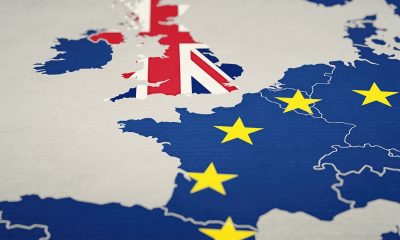EUROPE
Quo Vadis World Economy-III: The EU’s test with the interventionist state
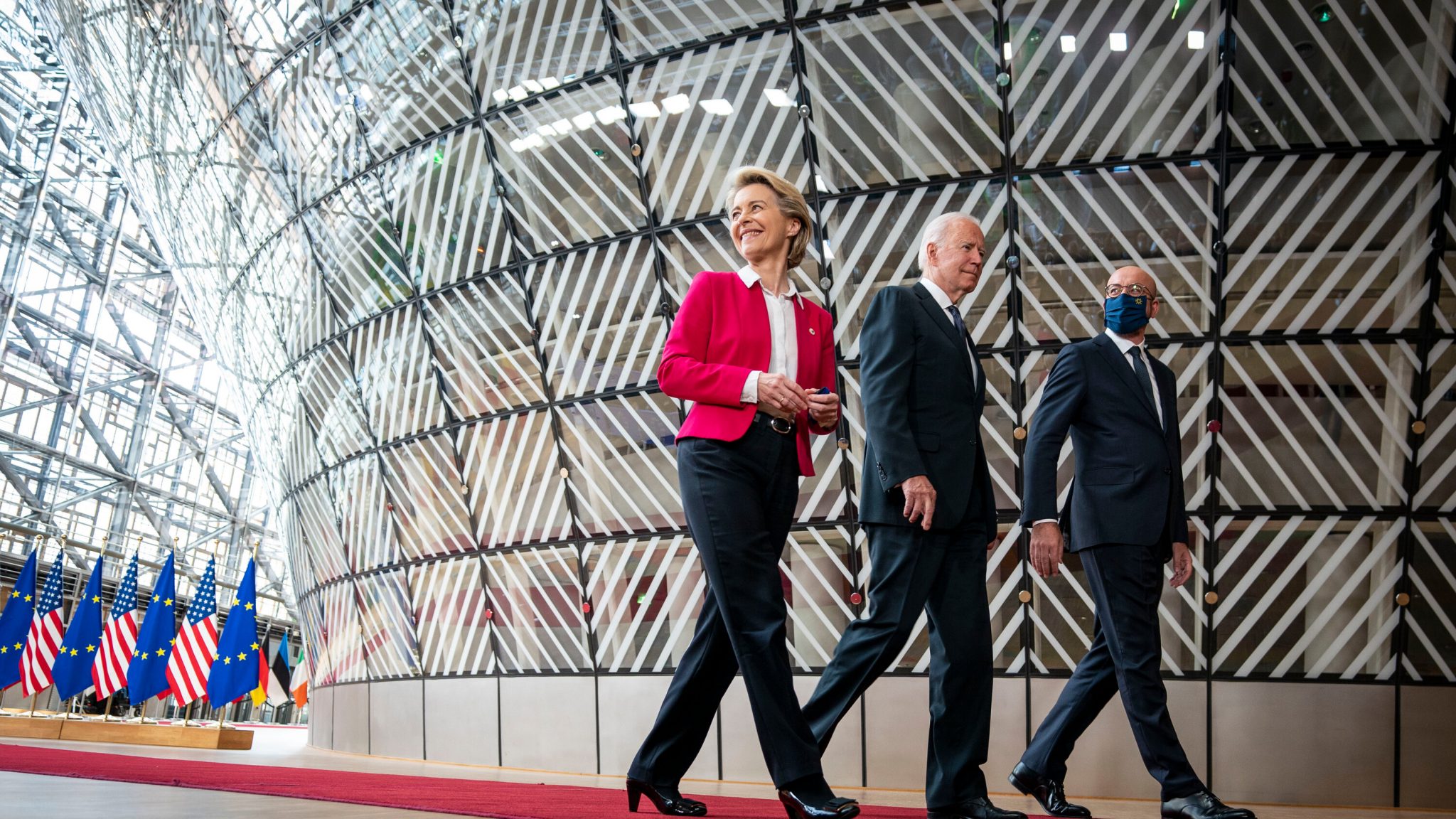
Both sides of the Atlantic reacted differently to the 2008–9 financial crisis. While the US and UK were pouring vast amounts of money into the market through enormously large rescue packages to bail out big banks. Evidently, this is a policy separate from the neoliberal doctrine of ‘fiscal discipline.’ On the other hand, Germany-led EU went for the neoliberal way. It did not only pursue the austerity measures that sparked social tensions throughout the continent and led to the rise of left and right populisms but also forced anti-austerity countries to implement them.
Now, while the ‘post-neoliberalism’ is being discussed, the United States is pursuing “protectionist” economic policies and seeking to involve its European and Asian allies in its struggle against China (and Russia). As a result of being severed with inexpensive Russian energy, the Inflation Reduction Act (IRA) and the CHIP Act are fueling the EU’s concerns about deindustrialization. On the one hand, indebted and having dependent competitiveness on state interventions, Southern and Eastern Europe and the richer Northern countries, not in favor of rescuing the poorer with joint EU loans, on the other, Brussels is awaiting much more challenging days.
Letter of objection to the European Commission
The European Commission has received a letter signed by Austria, Czechia, Denmark, Estonia, Finland, Ireland, and Slovakia.
Not signatories to the letter, Germany, Belgium, and the Netherlands also oppose the overall concept. The letter raises concerns about a proposed joint fund to support and shield the green industry from US subsidies. Instead of looking for new money, the letter demands, existing loan capacity should be utilized.
Only around 100 billion euros of the total of 390 billion euros of the post-pandemic recovery fund have been used, the seven countries recalled.
Central banks against governments
The tension between governments and central banks, which increase interest rates and employ monetary tightening to focus on ‘fighting inflation,’ is a prime illustration of the contention.
However, the epidemic years were a glorious time: The IMF, the World Bank, and national central banks all issued statements urging governments to “spend as much as you can.” It is believed that at that period, the United States pumped more than $2 trillion into the market via bond purchases and monetary expansion. During the same period, the EU helped the member countries stay afloat through joint borrowing and joint funds.
Now the disparity is widening, and it seems to be one of the most discussed topics among policymakers in the informal gatherings in the halls at the World Economic Forum (WEF) Davos summit.
Anticipating further inflationary pressure due to pandemics, geopolitical conflicts, and green transitions related to the ‘climate crisis,’ governments have prioritized spending more to ease the financial burden on consumers, notwithstanding the central banks argue and act the other way around.
Crying out “fiscal authorities must do more” in recent years, central banks seem to have received their wish, although in an unexpected form.
Furthermore, this difference, called “fiscal authority against monetary authority,” has not yet wholly appeared. According to IMF economist Gita Gopinath, the limits of tension between fiscal and monetary authorities have not been tested.
The European Union (EU) may be the only place where the rising tension is more visible. Member governments continue to unveil substantial aid packages to their citizens battling with energy and food inflation despite the European Central Bank’s aggressive interest rate increases to combat inflation.
Summary: Government aid packages
In the context of energy, the diverging monetary and fiscal policies are pretty evident.
To help with grid fees, a significant part of electricity bills, the Austrian government, for instance, is getting ready to offer a new aid package. In addition to the initial support package of 475 million euros until the middle of 2024, Vienna has revealed intentions to distribute an extra 200 million euros. Thus, the government will pay 80% of the network/infrastructure costs.
Due to rising wholesale power prices, France’s electricity and natural gas regulator CRE has suggested a 108 percent hike in residential electricity rates.
Despite the CRE’s recommendation, the French government only raised the rate by 15% with subsidies for electricity prices.
Households, small local governments, and micro-enterprises with annual revenues of less than 2 million euros are eligible for the government’s “tariff shield” system.
Greece, one of the EU’s weakest economies, even gave subsidies on energy bills to 840 million euros. Citing a fall in gas prices, Kostas Skrekas, the minister of energy, announced that subsidies would be reduced to 95 million euros.
Is the energy crisis over?
Governments seem to have concluded that the worst is over, thanks to the mild winter and energy costs plummeting.
For example, RTE, the French power grid operator, recently announced the risk of power cuts left behind. According to RTE, this is due to increased nuclear power output and the mild winter. RTE has reported that the utilization of nuclear energy capacity has reached 70%.
Once again, the mild winter seems to be reducing power use. This year’s consumption was 8.5% lower than the average for the same period of 2014-2019. Also decreasing by 13% was the use of natural gas.
Indeed, natural gas’s MW/s price on the Dutch stock market dropped from 200 euros to 70 euros in January. Moreover, 81 percent of the EU’s gas storage tanks are still full, and it is anticipated that this rate for Germany is close to 90%.
Still, Klaus Müller, the president of Germany’s federal grid agency Bundesnetzagentur, pointed out that if many heat pumps and charging stations continue to be installed, local power cuts will become a source of concern.
In order to avoid power outages, TransnetBW, the grid operator in southern Germany, has asked residents to decrease their energy use in the evenings.
South Holland has similar problems. The grid is reportedly overloaded due to balancing demand and integrating new energy sources.
For this reason, inconveniences occur in the ‘transition to green energy,’ an objective of these two countries. The load on the electricity grid is growing as demand for industrial heat pumps and charging stations increases. Considering a 27 percent growth in demand for electric cars in Germany alone, it is next to impossible to expect this problem to be solved quickly. In the short term, major transmission issues, particularly on local low-voltage lines, are anticipated to arise in Germany. From 2020 to 2021, investment in distribution networks had a 10% increase, much below the expected 40% rise.
Eurelectric predicts that in 2021, between 375 and 425 billion euros would need to be invested in energy infrastructure to render it endurable for the new electrification mechanisms. In addition, the inflationist change in electrical equipment over the last two years makes this prediction seem unduly optimistic.
The flutters of Brussels
The 0.2 percent shrinkage in Germany, the largest economy of the Old Continent, in the last quarter of 2022 is another indication that things are not going well. However, Olaf Scholz has pointed to declining energy prices and a mild winter as evidence that the recession is beginning to turn around.
One of the largest steel makers in Germany and the world, Thyssenkrupp, has urged the German government to match Washington’s “protectionism,” a sign that warning bells are ringing. Martina Merz, CEO of the conglomerate, emphasized the need to succeed in the green transition without deindustrializing the continent. Highlighting the sufferings of the steel, cement, and chemical industries from higher energy costs, Merz said that “tomorrow’s markets are being carved up now.”
Carved-up markets are ominous words that require no explanation. The European Commission’s “Green Deal Industrial Plan” seems like another dead-cat bounce by Brussels before the EU leaders’ summit to be held next week. The proposed draft urged Europe and its allies to combat “unfair subsidies” and “prolonged market distortions.” The United States and China seem to be the primary targets of this battle.
The loosening of the EU’s government incentives system appears vital for Europe in the ‘green energy transition.’ EU members have the same right as governments outside the EU to provide subsidies to businesses operating within the union.
The combined economic might of Germany and France, of course, exists here as well. Recalling that German and French industries get 77% of EU-wide state incentives (€356 billion and €162 billion, respectively), financially weak nations in the south, such as Italy, Spain, and Portugal, are once again bringing up joint EU borrowing for subsidies. The German and Dutch coalition, on the other hand, blame poor countries for seeking ‘grants’ rather than using the money in the pandemic recovery fund as a loan.
Moreover, the fragmentation is not only between EU countries but indeed between regions. Craig Douglas, the founder of World Fund, for instance, says the discrepancies between the specific buckets of capital in Europe are sharp, and there is more regional capital available in Aachen or Bavaria than in Paris if they want to build a manufacturing facility.
‘Europe is in panic mode’
Fear of the escape of investments created by the IRA has gripped all of Europe. “Europe is in panic mode,” Paul Tang, a Dutch member of the European Parliament, told the Financial Times (FT).
Panic is not a temporary problem. Concerns over the very fundamentals of the EU’s economic model are not comparable to this panic. Long before the IRA, the pandemic and the Ukraine crisis have already started to undermine the economic orthodoxy of the German-led EU.
Mark Rutte, the Dutch prime minister, is among those drawing attention to this, reminding that a more ‘interventionist’ approach could have a long-term impact far beyond the IRA.
However, the genie is out of the bottle. Ineligible for state subsidies, several EU-based manufacturers decide to relocate their operations to the other side of the Atlantic. These are by no means a few. Since the transition to “green capitalism” calls for significant investments, state interventions are crucial in managing and directing these investments and convincing society with the carrot and stick for this shift. A state that provides only fiscal discipline and austerity is no longer acceptable. Therefore, without German-French intervention, the goal of “strategic autonomy of Europe,” which has been brought up specifically by France, is unrealistic.
Moreover, the EU is still far away from the ‘clean technology’ investments and initiatives flowing to Asia and North America. In other words, the challenge comes not only from the United States but also from Asia, particularly China. In the next article, I put an end to the with a piece focusing on Asia and ‘developing countries,’ especially China.
EUROPE
Huawei lobbying investigation leads to searches at EP offices in Strasbourg
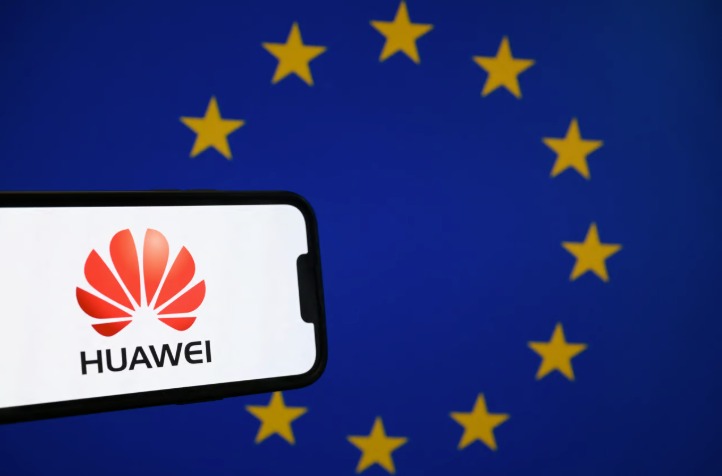
According to two officials knowledgeable about the matter who spoke to POLITICO, police authorities conducted searches in two offices belonging to European Parliament (EP) political assistants in Strasbourg.
Police had previously sealed the offices on March 13, the same day authorities raided more than 20 addresses in Belgium and Portugal as part of an investigation into alleged corruption within the EP benefiting Huawei. Officials confirmed on Thursday that these offices were searched.
One of the officials confirmed that the search in Strasbourg was part of the investigation into Huawei’s lobbying activities.
Members of Parliament and their assistants have offices in the institution’s building in Brussels, where regular parliamentary activities take place, and at the official seat in Strasbourg, France, where plenary sessions are held.
Two offices in Brussels were sealed and searched earlier this month and have since been returned to their occupants.
According to judicial documents seen by POLITICO, Belgian prosecutors are investigating whether Huawei made illegal payments to commission an open letter signed by eight European parliamentarians defending the interests of the Chinese tech giant.
The Belgian prosecutor’s office announced that four individuals are accused of corruption and forming a criminal organization, and one person is accused of money laundering.
A parliamentary assistant to Italian center-right MEP Fulvio Martusciello was arrested in Italy on March 20. According to the institution’s press services, the assistant has been suspended by Parliament. It is alleged that Martusciello’s office in 2021 spearheaded the effort to promote the letter under investigation.
A Huawei spokesperson previously stated that the company “has a zero-tolerance policy towards corruption or other misconduct and is always committed to complying with all applicable laws and regulations.”
EUROPE
Leaked draft reveals German coalition disagreements on key policies
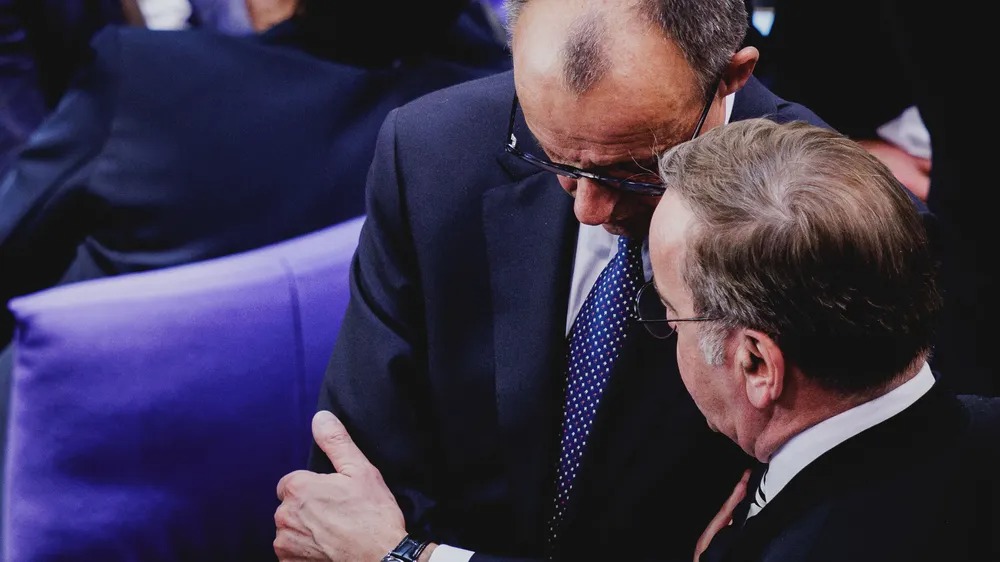
Until last Sunday, the CDU/CSU, which emerged as the leading party from the early federal elections, and the SPD, which came in third, negotiated the coalition agreement in 16 working groups.
Despite the intended confidentiality, many of the final documents were leaked to the media. Numerous proposed changes within the documents indicate that the parties are still far from reaching an agreement on many points.
The policy agendas under negotiation include migration; heating, energy, and climate; compulsory military service and military equipment; transportation, construction, and housing; citizen’s income; and finance.
Migration
Migration is one of the most hotly debated topics. Although CDU leader Friedrich Merz has announced a transformation in migration policy, the SPD is unwilling to follow suit on all points.
There is agreement that police at Germany’s permanently controlled borders should be able to turn back asylum seekers “in coordination” with neighboring countries, but what this precisely entails remains unclear.
Furthermore, Algeria, India, Morocco, and Tunisia will be quickly categorized as safe countries of origin, making it harder to obtain asylum. Immigrants who commit serious crimes will be deported.
Another clear decision is that no new admission programs will be opened for foreigners in vulnerable situations. Existing ones, such as for Afghans, will be terminated “as much as possible.” Individuals with subsidiary protection status will also not be allowed to bring their families from their home countries, though this affects only about a third of temporarily recognized refugees.
According to the final report of the migration working group, deportations to Afghanistan and Syria are planned, “starting with criminals and individuals at risk,” even though the new rulers in Syria are persecuting minorities.
Several minor measures have been agreed upon to deport more people more quickly. For instance, legal counseling before deportation will be abolished; previously, those legally rejected could still be legally represented.
In the future, the Federal Police will also be able to request detention to prevent those required to leave the country from absconding. Previously, only immigration authorities could do this.
Heating, energy, and climate
Although the CDU/CSU wants to view the new government’s energy policy as a “new beginning,” many points already agreed upon seem like a continuation of initiatives started by the traffic light coalition government that collapsed last year.
The likely CDU-SPD government does not intend to change the cornerstones of climate and energy policy: the commitment to climate neutrality by 2045, the coal phase-out by 2038, emissions trading, the expansion of renewable energy sources, and the use of hydrogen.
The construction of numerous new gas-fired power plants planned by the coalition government will also proceed. However, the early phase-out of coal power generation by 2030, once desired by the Greens, will be canceled.
The ‘Black-Red’ government now wants to permanently reduce the price of electricity by at least five cents per kilowatt-hour by lowering the electricity tax and grid fees. Energy-intensive industrial companies will also receive relief through an industrial electricity price, but this will cost the state billions.
How the expansion of electricity grids will proceed is unclear. The CDU/CSU wants to prioritize the construction of high-voltage overhead lines, which are cheaper but more exposed than underground cables. The SPD prefers underground cables to prevent protests.
The CDU/CSU wants to “exploit the potential for conventional gas production in Germany” and hopes for a breakthrough with new-generation nuclear power plants.
It also demands a quick review of whether recently decommissioned nuclear power plants can be reactivated, although experts have serious doubts about this. The SPD opposes all of these points.
Leaders also seem poised for difficult discussions regarding the long-debated heating law. The CDU/CSU wants the law repealed as announced but wishes to continue the “heating subsidy.” The Social Democrats only want to amend the law and make the subsidy socially graduated.
There is apparent agreement on climate money, but this too will likely remain theoretical. They state they want to return the revenue from the CO₂ price to citizens, but conditional on introducing “non-bureaucratic and socially graduated relief and subsidies for housing and mobility.” Despite billions in new debt, there is no money for a lump-sum payout.
Compulsory military service and the Bundeswehr
Discussions about the future of the German Armed Forces (Bundeswehr) are also ongoing. The working paper of the Foreign Relations and Defense Working Group shows consensus that the Bundeswehr must become stronger “short-term, decisive, and sustainable.”
Investments could be rapidly initiated through a “Bundeswehr Infrastructure Acceleration Act,” but this law has been in effect since 2022, and bureaucracy remains the biggest obstacle to the swift procurement of weapons and equipment.
The CDU/CSU therefore wants to remove some powers from the Koblenz Procurement Office and appoint an agency for this purpose. They also aim for a “multi-year investment plan,” because a single legislative period is considered too short for arms development and procurement.
The CDU/CSU also wants to reactivate compulsory military service. The SPD opposes this, favoring voluntary service for all and a “broad societal debate” on its introduction.
Transportation, construction, and housing
Regarding transportation, there is only one point of disagreement between the SPD and CDU/CSU: the speed limit on highways. The SPD wants a limit of 130 kilometers per hour, while the CDU/CSU rejects any limit.
On the other hand, there is clarity on the future of the Deutschlandticket (the subscription ticket for buses and trains) beyond 2025. There was initial resistance within the CDU/CSU, but an agreement has now been reached to continue the subscription. However, the price will increase “gradually and with social responsibility” starting in 2027.
The new coalition partners plan to fully utilize the special infrastructure fund for their plans to renovate the railway network: the SPD succeeded in increasing investments and establishing an infrastructure fund with a binding, long-term financing commitment for the railways.
Money from the special fund will also flow into the current renovation concept for busy high-speed train lines, thereby freeing up budget funds for neglected secondary lines.
At the same time, the future government partners are opening up a new financing gap of 5 billion euros for the railway. Until now, the road network had cross-financed the rail network with the help of revenue from truck tolls. In the future, however, financing cycles within a transport sector will remain closed, and truck tolls will flow to Autobahn GmbH.
From a climate policy perspective, air transport seems to be regressing. The likely new federal government wants to reverse the increase in the air traffic tax and continue supporting regional airports, which are often unprofitable.
However, there is at least some relief for local public transport: the SPD managed to ensure that federal regionalization funds primarily flow into local transport.
The SPD also achieved a victory in housing. The rent freeze, unpopular with the CDU/CSU, will be extended for another two years.
Citizen’s Income implementation
It has been agreed that the Citizen’s Income (Bürgergeld), introduced by the coalition government, will be renamed the “new basic income.”
Job centers will receive more money for administration. Conditions will be tightened. Accordingly, every unemployed person must “actively strive to find work.”
Sanctions will be applied “faster, simpler, and less bureaucratic.” Benefits for those who persistently refuse work will be completely cut, in line with the Karlsruhe jurisprudence.
The citizen’s allowance, which Ukrainians also receive and which the state sometimes grants without sanctions, had previously sparked heated debates about fairness.
Public finance
Negotiators have barely agreed on financial details. The CDU/CSU and SPD were able to gain some breathing room in the federal budget by relaxing the debt brake for defense spending. However, the additional fiscal leeway is limited, and the list of expensive election promises both parties want to implement is long.
Ultimately, the Federal Constitutional Court declared the solidarity surcharge (additional tax) legal on Wednesday. This means the federal government will retain annual revenues of 13 billion euros.
The main point of contention is what is possible regarding taxes. For example, it is argued that there isn’t enough money for broad income tax cuts. The SPD wants to increase the tax burden on high earners. This could increase federal revenues, but it is doubtful whether the CDU/CSU will agree to tax increases.
The CDU/CSU particularly wants to reduce the corporate tax from the current 30% to 25%. However, the SPD is only prepared to do this from 2029 and only wants to reduce it by one percentage point.
There is agreement on making investments in Germany more attractive. Depreciation rules are planned to be improved so that investment costs can be deducted from taxes.
EUROPE
F-35 debate intensifies across Germany and Europe
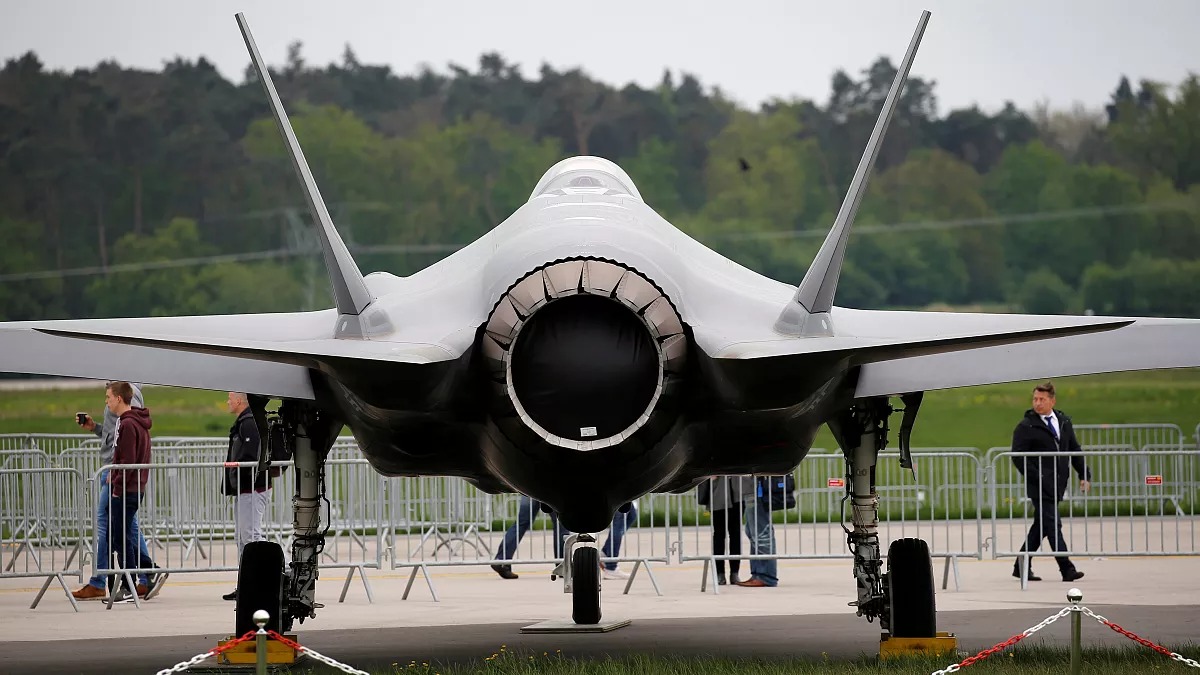
The debate over a potential withdrawal from the US F-35 fighter jet program is heating up in Germany and other European countries.
The background to this is that the jet can only be used with the approval of the US government, and restrictive provisions, for example regarding spare parts and software, make it impossible to escape dependence on the US in military operations with the F-35.
In Berlin, former “transatlanticists” in particular are pushing for withdrawal from the F-35 procurement program to achieve military independence.
Last week, a copy of the purchase agreement for the 35 F-35 fighter jets that Berlin decided to procure in March 2022 was leaked to the German magazine Stern. Details of the framework conditions for the purchase, which will cost €8.3 billion, thus emerged.
This purchase is being handled as part of the Foreign Military Sales (FMS) process, which is subject to strict rules. The F-35 purchase agreement grants Washington the authority to “terminate or suspend performance in whole or in part” without further notice “if required by the national interests of the US.” This means the US can unilaterally change the delivery time and quantity at any time. Contractual penalties are generally not provided for in the FMS procedure; legal recourse is excluded.
Once an F-35 fighter jet is delivered, no further modifications are permitted; spare parts and regularly required software updates are only available from the US manufacturer Lockheed Martin. According to the wording in the purchase agreement, “The customer is not authorized to carry out repair and maintenance work beyond the unit maintenance level.” This already guarantees that the German Air Force’s F-35s will only fly when the US administration wants them to.
Furthermore, the F-35’s basic software is kept secret. Therefore, it is impossible to check whether the jet can be influenced externally, but many assume this is possible. Data generated during operation, and especially during any mission, is collected and subsequently stored on Amazon Web Services, making it easily accessible to US authorities.
Finally, the US Foreign Assistance Act allows the US to “monitor the end-use” of the F-35 “at any time.” A “well-informed” source told the magazine Stern, claiming, “Targets, routes, indirectly tactics… US technicians are always on the plane.” An insider with “intelligence service knowledge” also explicitly confirmed this to the magazine, stating that “all mission planning is monitored in the US.”
Since last week, calls have been growing louder in Europe to avoid procuring F-35 jets if possible, or to withdraw from the agreement if a contract has already been signed. This was triggered on the one hand by the Trump administration’s decision to prohibit Ukraine from using US satellite data, and on the other hand by Washington’s continued efforts to acquire the autonomous Danish territory of Greenland.
For example, Danish conservative MP Rasmus Jarlov stated on X that he now regrets supporting Denmark’s decision to purchase 27 F-35 jets for its air force. Jarlov said, “I can imagine a situation where the US demands Greenland from Denmark and threatens to disable our weapons.” Jarlov argued that Copenhagen would then no longer be in a position to defend itself, making the purchase of US weapons “a security risk we cannot take.” He contended that Denmark will invest heavily in armaments in the coming years and should avoid American weapons wherever possible.
Some NATO countries are now considering abandoning the F-35. For example, Canada plans to withdraw from the F-35 purchase, but has already paid for 16 fighter jets due to be delivered early next year. According to Defense Minister Nuno Melo, Portugal, which previously planned to buy the US fighter jet, is also changing its mind. The French company Dassault Aviation has now offered to supply Rafale jets to the Portuguese government.
The Rafale is a fourth-generation fighter jet, unlike the fifth-generation F-35, but it is cheaper and requires no US components, thus offering independence from the US. French President Emmanuel Macron argued on March 16 that European countries should, in principle, switch from the F-35 to the Rafale; furthermore, the new Franco-Italian SAMP/T air defense system could be used instead of the US Patriot air defense system.
One challenge stems from the fact that a number of European NATO countries, such as the United Kingdom, Norway, the Netherlands, Belgium, and Italy, already possess F-35 jets. Many other countries, including officially neutral Switzerland, have placed binding orders for the aircraft.
Conflicting voices are also rising in Germany. Former “transatlanticists” in particular are distancing themselves from the F-35 procurement. Former Airbus CEO Thomas Enders, now president of the influential think tank German Council on Foreign Relations (DGAP), said last week, “Nobody needs the F-35”; Enders added that he “would be the first to cancel it under these new geopolitical conditions.” CDU foreign policy expert Roderich Kiesewetter also called for a “review of existing contracts with the US,” such as the F-35 purchase agreement, stating, “It is now absolutely essential to look for alternatives.”
Defense Minister Boris Pistorius, however, favors continuing with the F-35 purchase. One of the reasons he cites for this is nuclear sharing, whereby German Air Force fighter jets could drop US nuclear bombs in a war scenario. Observers note that dropping US nuclear bombs is already only possible on orders from Washington, making it irrelevant whether the F-35s could be paralyzed by the US as long as they are available solely for nuclear sharing. However, nuclear sharing itself is no longer considered secure.
Berlin has already transferred approximately $2.42 billion to Washington for the F-35 and has begun costly modifications at Büchel Air Base, where the US fighter jets are to be stationed.
-
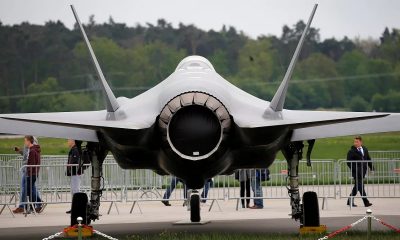
 EUROPE4 days ago
EUROPE4 days agoF-35 debate intensifies across Germany and Europe
-
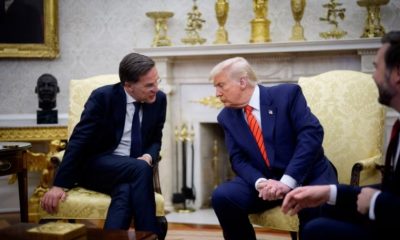
 EUROPE1 week ago
EUROPE1 week agoEurope plans for US absence in NATO with 5-10 year strategy
-

 ASIA2 weeks ago
ASIA2 weeks agoChina’s AsiaInfo expands with DeepSeek-powered AI
-

 EUROPE1 week ago
EUROPE1 week agoFrench defense industry gears up for war amid EU strategic autonomy push
-

 AMERICA1 week ago
AMERICA1 week agoTrump’s tariffs drive Nvidia to invest heavily in US manufacturing
-
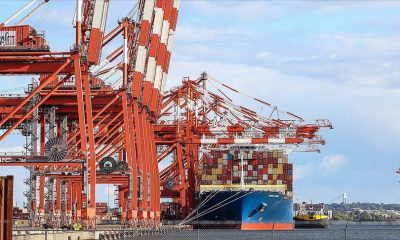
 DIPLOMACY6 days ago
DIPLOMACY6 days agoTrump’s proposed fees on Chinese ships threaten US maritime industry
-

 DIPLOMACY2 weeks ago
DIPLOMACY2 weeks agoUS, Britain, and Türkiye excluded from EU armament fund
-

 ASIA1 week ago
ASIA1 week agoIndia shelves $23 billion plan to rival China’s factories


